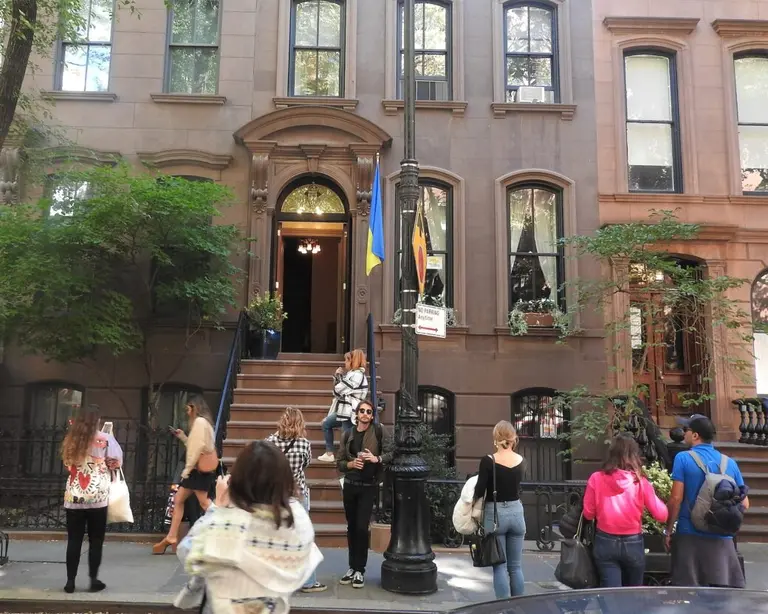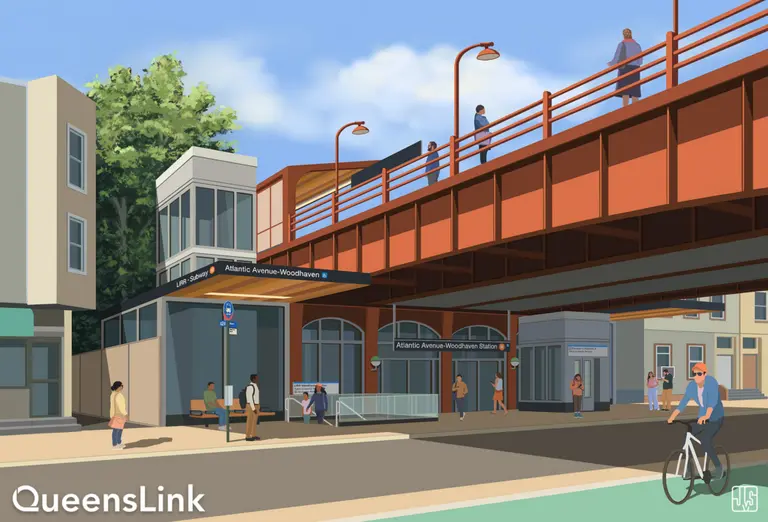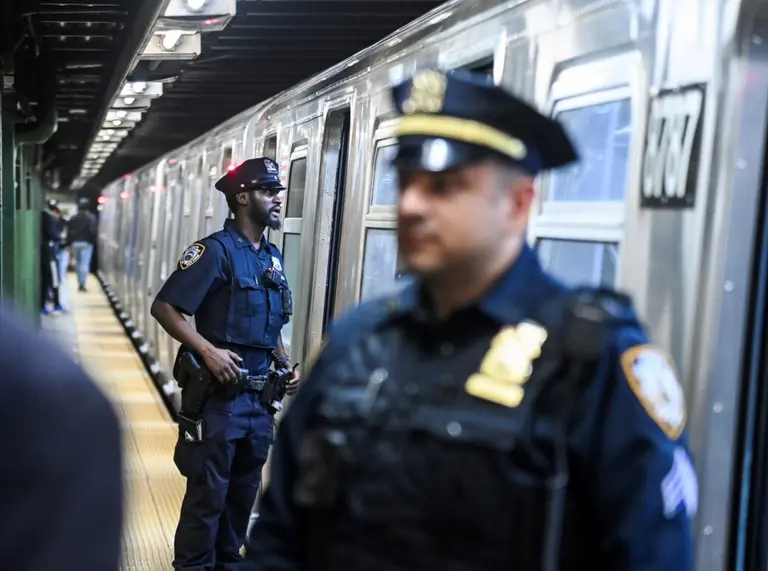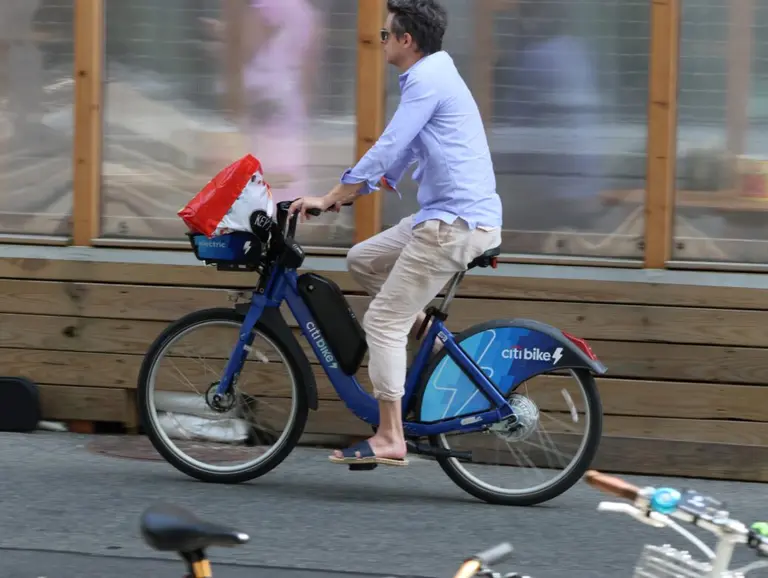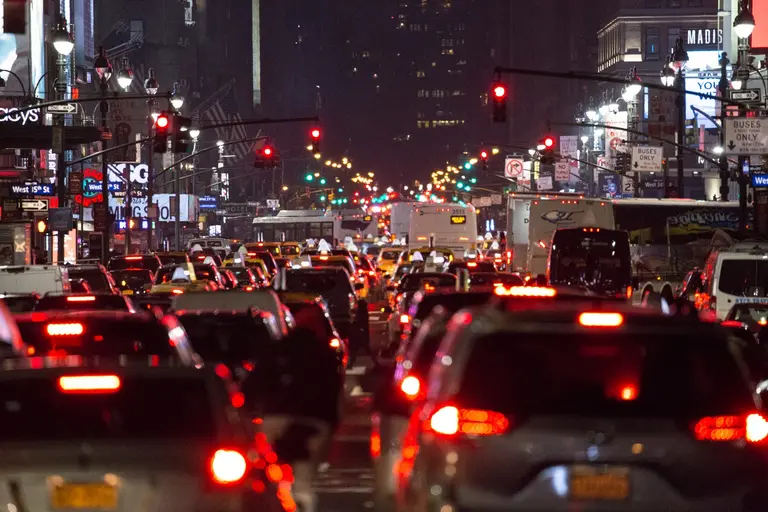After one week of congestion pricing, MTA data shows less traffic and faster bus commutes
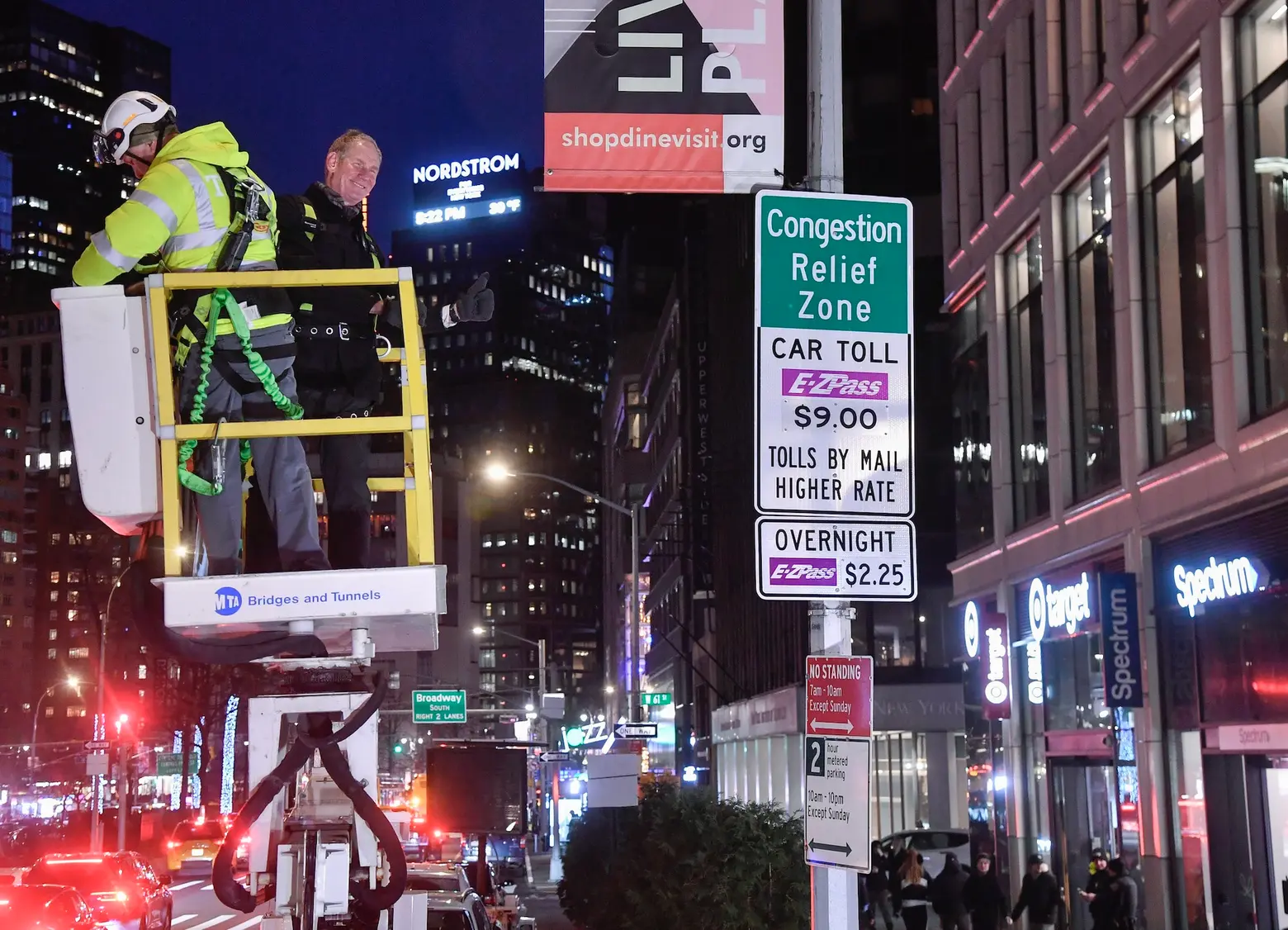
MTA Chair & CEO Janno Lieber with the final Congestion Relief Zone sign unveiled at Broadway & West 62nd Street on Saturday, Jan. 4, 2025, hours before the Central Business District Tolling Program goes into effect. Photo courtesy of Marc A. Hermann / MTA on Flickr
In its first week, New York City’s congestion pricing program has reduced both traffic and the number of vehicles entering Manhattan’s busiest areas, according to early data released by the Metropolitan Transportation Authority. The agency on Monday released preliminary data for week one of congestion pricing that showed a 7.51 percent decrease in traffic and 219,000 fewer vehicles entering the tolling zone compared to the same period last year. Many drivers have reported faster trips, with bus routes crossing the East and Hudson Rivers saving up to four minutes.
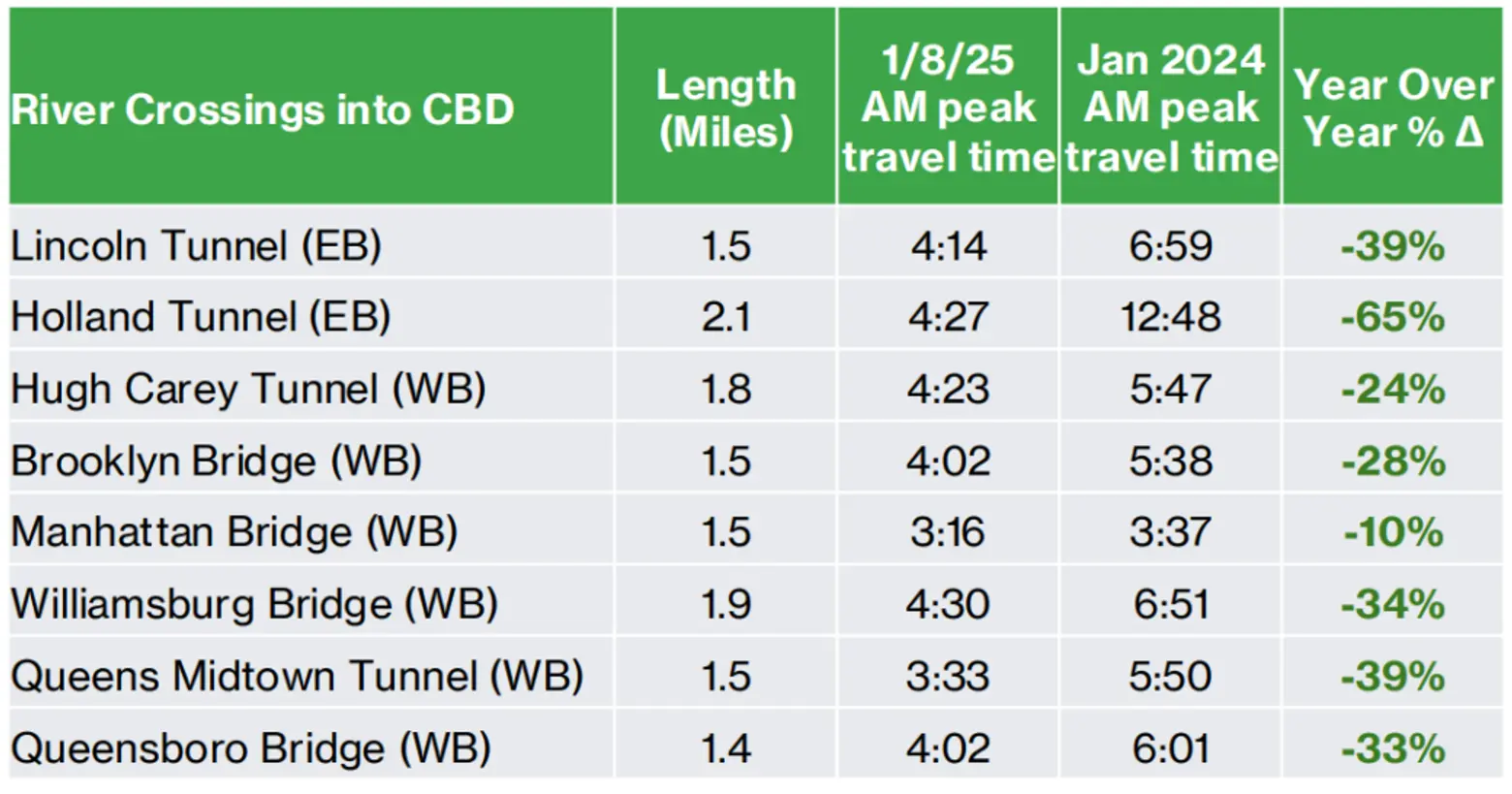
The program, which went into effect on January 5, is designed to lower congestion in Manhattan’s central business district by instating a $9 toll during peak hours, with higher fees for trucks and other large vehicles. Drivers who enter Manhattan below 60th Street are subject to the fees.
Initial data shows faster travel times into the tolling zone during Wednesday morning commutes on January 8, between 7 a.m. and 9 a.m., with all East and Hudson River crossings experiencing up to a 39 percent reduction in travel time compared to the same day last year.
Travel times on the FDR Drive and West Side Highway also improved during peak afternoon hours. The northbound side of the FDR saw a 46 percent decrease in travel times compared to the same period last year, while the northbound and southbound sides of the West Side Highway experienced reductions of 28 and 20 percent, respectively.
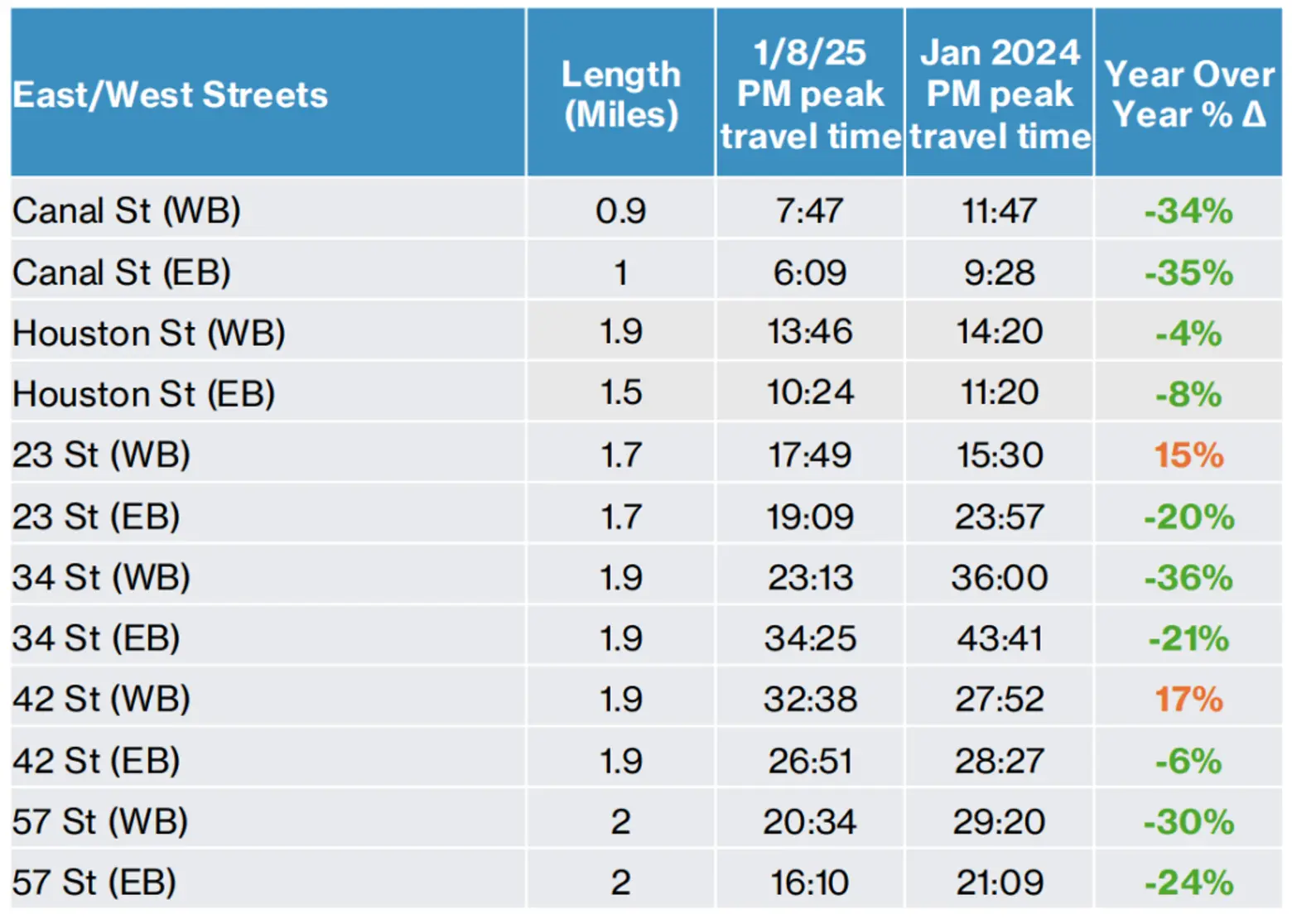
East and West streets within the tolling zone also saw faster travel times, especially during the afternoon peak period from 4 p.m. to 7 p.m., with reductions ranging from 6 to 36 percent. On January 8, westbound travel times on Canal Street were 34 percent faster than the average peak travel time in January 2024, saving commuters up to four minutes.
Additionally, some North and South avenues within the zone saw travel time improvements, with 3rd and 8th Avenues experiencing 21 and 22 percent reductions, respectively.
But while traffic improved in some sectors of the zone, traffic was still heavy along West 42nd Street and Ninth Avenue between West 60th and 14th Streets, according to the New York Times.
“The early data backs up what New Yorkers have been telling us all week – traffic is down, the streets feel safer, and buses are moving faster,” MTA Chair and CEO Janno Lieber said. “Positive change wasn’t guaranteed, and it’s exciting to hear commuters – including drivers – talking about how much time they are saving since the program kicked off a week ago.”
Buses have also been moving faster, especially in the peak morning hours. Routes that cross the East or Hudson Rivers into Manhattan—most of which are express buses—saw the highest reduction in travel time.
The SIM24 saved a total of seven minutes crossing the Lincoln Tunnel compared to last year, while the B39 saved 3.9 minutes compared to similar runs in January 2024—a 28 percent reduction in travel time.
Ridership on express bus routes has increased above average during the first week, including on the BM1, BM2, BM3, and BM4, which cross into Manhattan via the Hugh Carey Tunnel; the SIM9 and SIM24, which travel into Manhattan via the Verrazzano Bridge, Hugh Carey, and Goethals Bridges; and the QM16 and QM17, which cross into Manhattan via the Queens-Midtown Tunnel.
“When a car is able to travel faster over a bridge or through a tunnel, that motorist saves a few minutes, but when a bus is able to do the same, 50 people benefit from those time savings,” NYC Transit President Demetrius Crichlow said.
“We hope to see a continuing trend of better bus speeds, which will only make the transit network stronger, and complement the best subway on-time performance in over a decade and increased service frequencies across 12 subway lines.”
However, with just one week of data, it’s too early to say whether the program is working. There isn’t any historical data on the number of vehicles that entered the zone before the program, so perfect comparisons are not yet possible, according to the Times.
It’s also unclear how much the subfreezing temperatures during the program’s first week affected the number of vehicles entering the city.
New Jersey Transit officials did not report a substantial increase in transit users last week, but stated that it was “too early to see how commuter trends may shift due to congestion pricing only a few days after implementation,” as reported by the Times.
The MTA is slated to release a more comprehensive overview of January’s data in mid-February.
RELATED:
